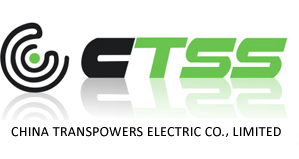Home >> News Center
ABB installs world's most powerful offshore converter platform
2015-9-10
The offshore converter station is part of the DolWin2 project which will be operated by transmission system operator TenneT and will connect offshore wind farms in the North Sea’s DolWin cluster, currently the largest offshore wind farm cluster worldwide, with the German grid. The main function of the station will be to convert the electricity generated by the offshore wind farms from alternating current (AC) into high-voltage direct current (HVDC) for efficient and reliable transmission to the mainland.
“After the successful handover of the DolWin1 link in July, this is another key milestone in the execution of our offshore wind projects,” said ABB CEO Ulrich Spiesshofer. “It is a further example of our focus on relentless execution and of the ongoing progress in the Power Systems division’s Step Change program.”
DolWin2 is part of Germany’s energy transition roadmap, called “Energiewende”, which foresees the generation of more than 6.5 gigawatts (GW) from offshore wind by 2020 and 15 GW by 2030. The DolWin1 grid connection, which ABB commissioned and handed over to transmission system operator TenneT at the end of July 2015, also contributes to this goal.
The complete platform including substructure weighs around 23,000 tons and is around 100 meters long, 70 meters wide and 100 meters tall. It was transported last year from Dubai, where it was built, to Aibel’s shipyard in Norway. Here, the platform was outfitted and one week ago sailed away to arrive after a short transportation phase of four days at its final destination in the DolWin cluster, 45 kilometers off the German coast. DolWin beta utilizes an innovative self-installing gravity-based structure (GBS) concept, whereby the platform is slowly ballasted down to the seabed by filling the six columns with water, which will in the coming weeks be completely replaced by gravel to permanently secure the platform.
“Putting such a huge platform in place is one of the most delicate operations in the delivery of an offshore power link, requiring intensive pre-planning and cooperation between the stakeholders involved and we are pleased that this important project landmark has gone smoothly,” said Claudio Facchin, President, ABB Power Systems division.
ABB was awarded the turnkey responsibility for the design, engineering, supply and installation of the offshore wind connection by TenneT, a leading European transmission system operator. The project scope includes the offshore converter station, the sea and land cable systems, and the onshore converter station.
HVDC is the technology of choice for transmitting large amounts of power, over long distances, efficiently and reliably through overhead, underground and sub-sea links with minimum losses. It is ideally suited for the integration of remotely located renewable energy sources like offshore wind, desert solar or mountain-based hydropower. It is also being increasingly deployed to create cross border interconnections – to strengthen grids and improve the reliability of power supplies. This is a key focus area in ABB’s Next Level strategy.
ABB has been awarded about 100 HVDC projects since it pioneered the technology more than 60 years ago. This represents a total installed capacity of more than 120,000 MW and accounts for around half the global installed base. ABB further developed HVDC in the 1990’s by introducing a voltage sourced converter (VSC) solution named HVDC Light® and leads the way in this technology, having delivered 16 out of 22 VSC HVDC projects in commercial operation around the world.


 Hydro Turbine Generator Units
Hydro Turbine Generator Units
